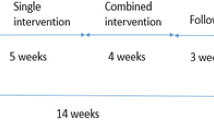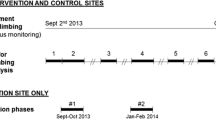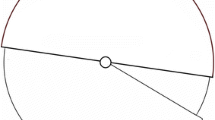Abstract
Stair climbing can be a low-cost and relatively accessible way to add everyday physical activity, but many building stairwells are inaccessible or unpleasant and elevators are far more convenient. This study explores the use of and attitude toward stairs in an innovative office building where the main elevators for able-bodied users stop only at every third floor (“skip-stop” elevators). These users are expected to walk up or down nearby stairs that have been made open and appealing (“skip-stop” stairs). The study takes advantage of a natural experiment. Some workers’ offices were clustered around the skip-stop elevator and the stairs, whereas others had access to a traditional elevator core, that is, an elevator that stopped at each floor with nearby fire exit stairs. Stair use on the open skip-stop stairs and enclosed fire stairs was measured using infrared monitors and card-reader activity logs. An online survey of employees (N=299, a 17.4% response rate) gathered information on stair use and attitudes and behaviors toward physical activity; interviews with key personnel identified major implementation issues. The skip-stop stair was used 33 times more than the enclosed stair of the traditional elevator core, with 72% of survey participants reporting daily stair use. Although implementation issues related to organizational objectives, costs, security, barrier-free accessibility, and building codes exist, the skip-stop feature offers a successful strategy for increasing stair use in workplaces.

Similar content being viewed by others
References
Pate R, Pratt M, Blair SN, Haskell WL, Macera CA, Bouchard C, et al. Physical activity and public health. A recommendation from the Centers for Disease Control and Prevention and the American College of Sports Medicine. JAMA. 1995;273 (5):402–407.
Lee IM, Paffenbarger RJ . Physical activity and stroke incidence: the Harvard Alumni Health Study. Stroke. 1998;29 (10):2049–2054.
Boreham CA, Wallace WF, Nevill A . Training effects of accumulated daily stair-climbing exercise in previously sedentary young women. Prev Med. 2000;30 (4):277–281.
Blamey A, Mutrie N, Aitchison T . Health promotion by encouraged use of stairs. BMJ. 1995;311 (7000):289–290.
Anderson RE, Franckowiak SC, Synder J, Bartlett SJ, Fontaine KR . Can inexpensive signs encourage the use of stairs? Results from a community intervention. Ann Intern Med. 1998;129 (5):363–369.
Kerr J, Eves FF, Carroll D . Posters can prompt less active people to use the stairs. J Epidemiol Community Health. 2000;54 (12):942–943.
Kerr J, Eves FF, Carroll D . The influence of poster prompts on stair use: the effects of setting, poster size and content. Br J Health Psychol. 2001;6 (4):397–405.
Coleman K, Gonzalez E . Promoting stair use in a US-Mexico border community. Am J Public Health. 2001;91 (12):2007–2009.
Marshall AL, Bauman AE, Patch C, Wilson J, Chen J . Can motivational signs prompt increases in incidental physical activity in an Australian health-care facility? Health Educ Res. 2002;17 (6):743–749.
Kerr KA, Yore MA, Ham SA, Dietz WH . Increasing stair use in a worksite through environmental changes. Am J Health Promot. 2004;18 (4):312–315.
Nicoll G . Spatial measures associated with stair use. Am J Health Promot. 2007;21 (4 Suppl.):346–352.
Eves FF, Webb OJ . Worksite interventions to increase stair climbing; reasons for caution. Prev Med. 2006;43 (1):4–7.
Trailmaster TM1550 Active Infrared Monitor. Trailmaster, Lenexa, KS. Available at http://www.trailmaster.com/tm1550.php, accessed 28 October 2008.
Huizenga C, Zagreus L, Arens E, Lehrer D . Measuring Indoor Environmental Quality: A Web-based Occupant Satisfaction Survey. University of California at Berkley, 2003. Available at http://www.cbe.berkeley.edu/research/pdf_files/Huizenga2003_USGBC.pdf, accessed 28 October 2008.
Craig CL, Marshall AL, Sjöström M, Bauman AE, Booth ML, Ainsworth BE, et al. International physical activity questionnaire: 12-country reliability and validity. Med Sci Sports Exerc. 2003;35 (8):1381–1395.
International Conference of Building Officials. Uniform Building Code. Pasadena, CA: International Conference of Building Officials; 2001.
Acknowledgements
This study was funded by a grant from the Robert Wood Johnson Foundation through Active Living Research. We would like to acknowledge the many investigators who made significant contributions to portions of the study, including Keith Jundanian, Selen Okcu, Dr. Sheila Bosch, Dr. William Kohl III, and Cheryl Fuller. We also acknowledge the information and assistance provided by Pavel Getov of Morphosis Architects; Jim Hammer, Junius Pierson, and Raashan Bernard of the California Department of Transportation; Rob Komet of Otis Elevator; and Stephen Clifford of Pelican Woodcliff Ltd.
Author information
Authors and Affiliations
Rights and permissions
About this article
Cite this article
Nicoll, G., Zimring, C. Effect of Innovative Building Design on Physical Activity. J Public Health Pol 30 (Suppl 1), S111–S123 (2009). https://doi.org/10.1057/jphp.2008.55
Published:
Issue Date:
DOI: https://doi.org/10.1057/jphp.2008.55




